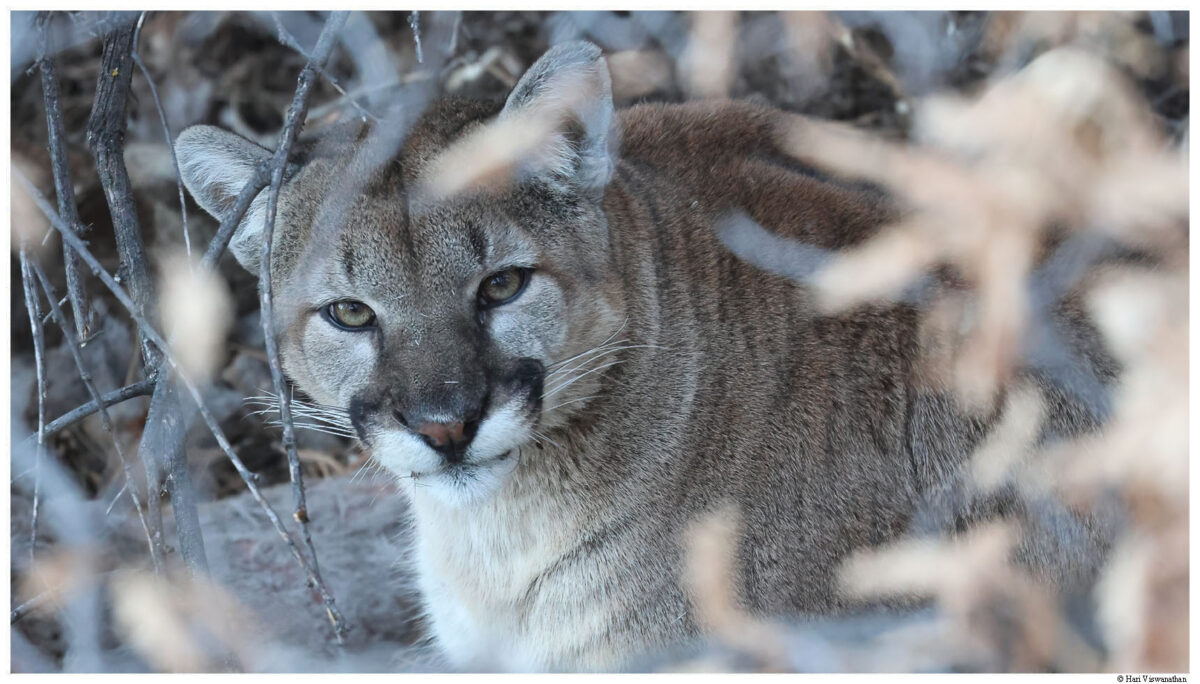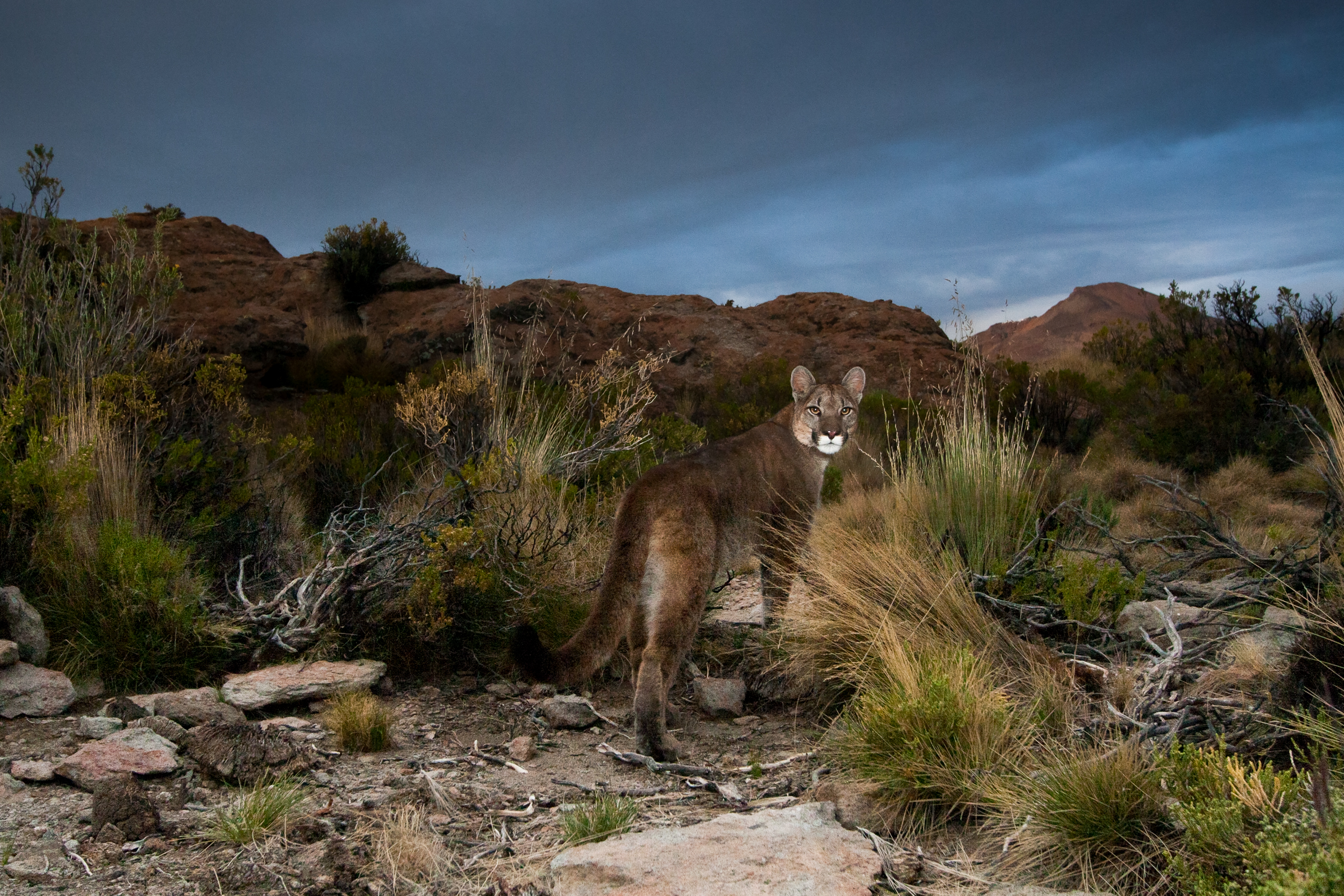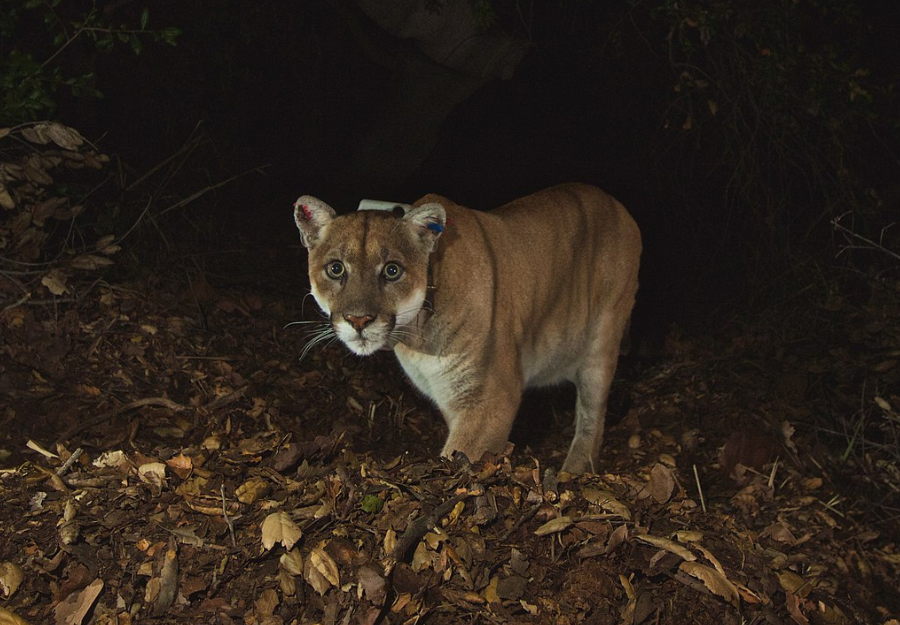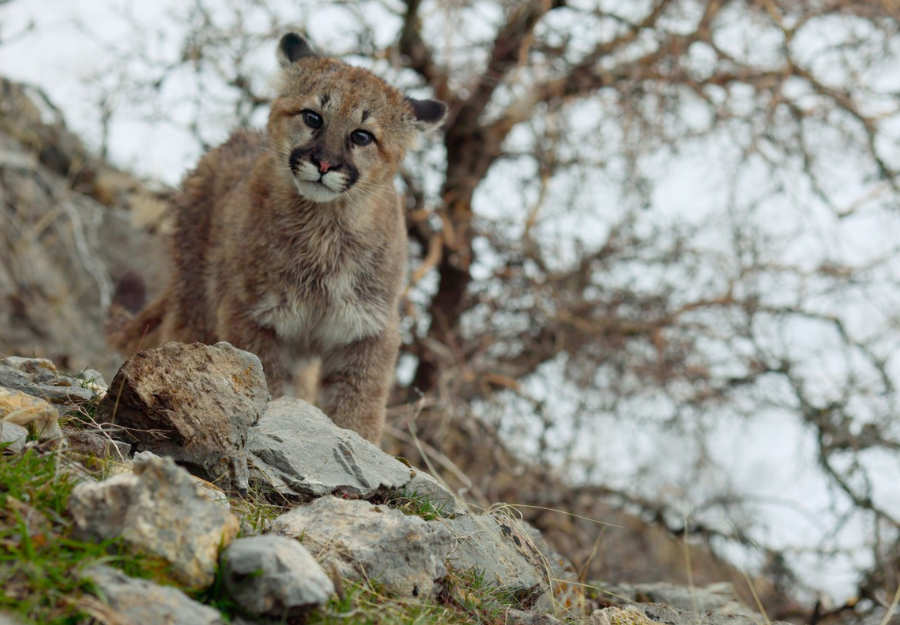By KANIQUA S. DANIEL
Of The Daily Oakland Press
COMMERCE TWP. – The carcass of a deer found 10 feet high in a tree has residents concerned that a cougar may be roaming Commerce Township.
In the wooded area near Oakley Park and South Commerce roads, Donna O’Connell said neighborhood children found the deer remains and brought them to her attention with suspicions that a cougar killed it.
This comes after three reports of a large catlike animal in Rochester Hills recently.
“Where they saw it, (the deer) it’s like my own back yard, and I saw it up in the tree myself,” O’Connell said. “When we got it down, there was no blood on the deer. But on its back, there were some claw marks, some hair missing and puncture wounds.”
O’Connell said she and other residents checked for gunshot wounds but found nothing that indicates this was the act of a human.
She said she believes a cougar suffocated the deer and then dragged the corpse up a tree so it could be eaten later.
“I called the police, the (Department of Natural Resources) and the Oakland County Sheriff to come out here and look at it,” O’Connell said. “But nobody can give us an explanation of what actually happened. We believe something is out there, and people need to know.”
Ray Rustem, supervisor of the Natural Heritage Unit at the Michigan Department of Natural Resources, said it’s unusual for cougars to take their prey up into trees, but he’s not ruling out the possibility.
“I won’t say it couldn’t happen,” Rustem said. “But they typically keep the carcass of the animal on the ground and will cover it with debris and leaves.”
Patrick Rusz, director of the wildlife program at the Michigan Wildlife Conservancy, said he has investigated reports similar to O’Connell’s and finds it hard to believe a cougar did this.
“Most likely, it was a human, but anything’s possible,” he said. “Sometimes, there can be a natural explanation. Maybe it took a leap and hung itself. That would be a one-in-a-million occurrence, but deer certainly can jump 10 feet high.”
Rusz said when people see animals resembling cougars on television carrying their prey into trees – like leopards – they assume the cougar will do the same.
He said it’s hard for anyone to determine if a cougar is responsible for this incident.
While there have been sightings verified by video cameras in areas like Monroe County, most occurrences take place during the warmer months, according to Rusz, which makes it difficult to obtain evidence on whether cougars remain in the area.
“What they’re asking for is close to impossible. You’re literally dealing with a here-today, gone-tomorrow-type animal,” he said. “Cougars can roam 400 square miles in a day. It’s easy to say you’ve seen one, but it’s hard to verify because they can be 20 miles away in a matter of hours.”
The largest population for cougars is in Western states, such as California. Michigan does have a small population in the north, and Rusz said there have been few findings in southern Michigan.
He said a majority of the sightings are attributable to transient cougars, which roam from state to state in search of mates.
Female cougars are traditionally known as resident cougars, meaning they are less likely to roam different areas.
“The real question people should be asking is if there are some resident cats in southern Michigan, some that have established territory,” Rusz said. “We’ve got a long way to go in understanding our cougar population in the state, but people really shouldn’t be that worried.
“While cougars are dangerous animals, statistically, the chance of a human attack is close to zero because cougars feed on white-tail deer, which have a large population in Michigan.”
Other sightings of what could be cougars have been reported this past year in White Lake, Highland and Orion townships.
Possible cougar sightings also have been reported in southern Wayne County and eastern Livingston County.



 Facebook
Facebook Twitter
Twitter Send Email
Send Email


